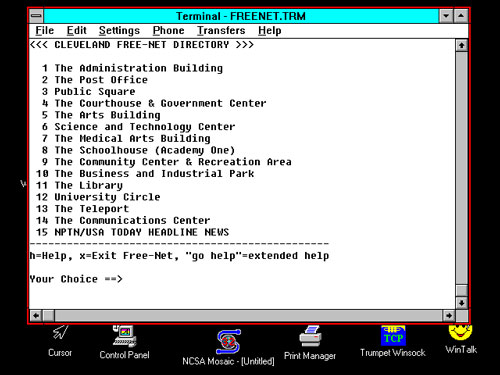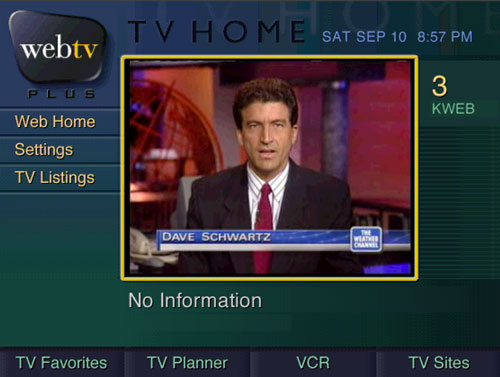Social Gloss
In continuing with our long series of glossary entries, let’s take a look at some online-community-related terms hiding in the archives.
Be sure to give today’s sponsor, Bear Blog, a look below. ⤵
Sponsored By Bear Blog
Bear Blog: The blogging platform where words matter most. A privacy-first, no-nonsense, super-fast blogging platform. No trackers, no javascript, no stylesheets. Just your words.
Publish something awesome with your bear hands ᕦʕ •ᴥ•ʔᕤ
/uploads/Network.jpg)
The Glossary of Tedium, vol. 3: Online Communities
From networks to the underlying technology that drives them, online communities often have a lot of influence on how we use our computers. After all, a lot of people probably got their first computer in an attempt to get online in some way, shape, or form.
You may know some of these terms quite well, in part because we bring them up all the time. Some of them may be much more obscure. Some may be relatively recent. Others may refer to technologies that were built before you were born. We have at least one reference to an utterly-out-of-date song by a Rock and Roll Hall of Fame inductee.
They may be disparate, but they have one thing in common—all of them have helped shape the online world that we know all too well today.
As I noted in the prior two entries of this ongoing series, it is going to be hard to get 26 letters for each round of this glossary-building exercise, but I fortunately was able to pull it off here. Anyway, let’s do this:
/uploads/Acrophobia.png)
Acrophobia
An early online social game, popular in the late 1990s, that found much interest as an online-oriented party game. Of interest, as we noted in a Wordle-themed 2022 piece, was that the concept started as an IRC game, and as a result, it introduced some fascinating approaches to moderation that had not been seen in the mainstream prior to that point. (Notably, it was run by the same people who created You Don’t Know Jack.)
Bomis
An early example of a webring-style service, with a design reminiscent of early Yahoo. The service was somewhat explicit for what it was, in part because the additions to the webring tended to be added by users, who were interested in stuff like images of female actresses and libertarian politics. Bomis later became known as the company from which the much-more-famous Wikipedia was born.
ColdFusion
The programming language that MySpace used in the early 2000s, at a time when the software was proprietary. The company used it as a kludge after its original programmer, who built the site in Perl, left the company because he found the work boring. A fun side effect of this is that the programmers accidentally left in an obvious coding error that allowed users to upload their own custom CSS and javascript onto their pages.
Diaspora
A term for a community whose population shifts significantly due to displacement. While first used to describe wide-scale emigration, it became well-known in the 2010s after a social network called Diaspora launched a successful Kickstarter. Many of the ideas of that social network showed up in Mastodon and its primary protocol, ActivityPub.
EFnet
The name of a popular IRC network, which stands for “Eris Free network.” The network, which became one of IRC’s most prominent networks throughout the 1990s, was named directly in reference to a conflict over a server named eris, which was disrupting the quality of the IRC service because it refused to change its configuration. Despite this obscure name origin, the network remains active today, with eris being a long-forgotten memory.

An example of what the Cleveland Free-Net looked like on a terminal screen. (via rtfm.vtt.net)
Free-Net
A type of online service, similar to a bulletin board, that offered local communities free access to online resources—and for many communities, was their first interaction with the internet. First developed by a professor at Case Western University, the concept spread far and wide during the late 1980s and early 1990s, but eventually fell off because of the growing popularity of the World Wide Web.
Gmail’s 102KB File Limit
A quirk of modern emails, in which Google will “jump” any email longer than this length. This limitation means that newsletter authors might find themselves writing less than they intended, thanks to the strict limits on length. (Tedium has hit it a few times.)
HTML Tables
A popular way of laying out content on the internet in the late 1990s, which eventually gave way to div and span tags, along with Cascading Style Sheets. Unfortunately, they have been a common element in e-mail since at least the late 1990s, thanks to email clients failing to modernize at a reasonable place.
“I Hate My Frickin’ ISP”
A song, written by Todd Rundgren, that described a unique state of affairs in the late 1990s, when it was common to get busy signals when trying to connect to the internet. Rundgren wrote this song and played it on TV and everything. God, what a world we used to live in.
Juno
The online internet service that originally gained interest for its bold model, which involved offering access to free email via an application, starting in 1996. It came around just a month after Hotmail, and was ultimately less popular than the free service.
Kermit Protocol
An early file-transfer protocol, commonly used with early online networks. Launched at Columbia University in the 1980s, it was intended at first to make it so you didn’t need floppy disks to share files between machines on campus—but it became common for people with modems to use it for everything ese. Despite its primary use case fading with history, the protocol is still being actively updated.
.ly
The top-level domain for the government of Libya, which faced an unusual situation around its domain name—its friendliness to Web 2.0 startups, especially those used with social media. The domain, used most notably by link-shortening companies like Bitly and Hootsuite, became a pawn in an extended civil war that most notably led to the death of longtime leader Muammar Gaddafi. At one point, as a result of issues that emerged, the top-level domain came under ICANN’s control.
“Me at the zoo”
The first video uploaded to YouTube, by the company’s co-founder, Jawed Karim. At 19 seconds, it is nowhere near the epic lengths of today’s YouTube clips. For some reason, this video appeared in my algorithm for Elliott Smith videos.
Netsplit
The separation of a node from a broader network, an issue that commonly emerged on IRC during its 1990s heyday. The service’s frequent disruptions led to the rise of alternative networks that supported IRC—and otherwise didn’t talk to one another.
/uploads/Orkut.jpg)
Orkut
Google’s first attempt at a social network, developed by programmer Orkut Büyükkökten in the mid-2000s. The network found interest in parts of the world outside the U.S., growing at one point to 300 million users, but finally fell offline around 2014. Büyükkökten claims that he want to revive it someday.
PowWow
The name of the online service John McAfee ran in the late ’90s as an online chat service with voice and instant-messaging capabilities. The service, which is known today for its unusually aggressive Native American-themed marketing, was built by McAfee after he had a heart attack and visited a number of Native tribes in Colorado. He took (somewhat unusual) inspiration from the trip to build his new startup.
Quantum Link
The original name for America Online, when it was a network on the Commodore 64 platform. The service, much smaller than the behemoth AOL would become, was susceptible to stakeholder pressure. Notably, an LGBTQ community shuttered because a single retailer complained to Commodore.
Rick’s List
A CNN television show that was one of the first attempts by a mainstream news outlet to cover social media in a live news format. The show, hosted by anchor Rick Sanchez, only lasted about nine months, in part because it was a strong target of mockery while it was on the air. (Not helping: Sanchez tried taking aim at one of the sources of said mockery, Jon Stewart, on the air by criticizing his Jewish heritage. That cost him his gig.) With his show, Sanchez attempted to turn social media into a conversation—something that now every news outlet seems to now do. Sanchez is still around and is trying to convince people that the lead character from Rick and Morty was named after him.
Substack
The bane of my existence, based on how often I complain about it. It now has a social network attached for some reason.
Trintex
The name of the partnership originally forged between IBM and Sears to create an online network. The initiative, which cost millions of dollars and took four years to develop, became the Prodigy network, in part because the technology that had inspired it, videotex, had fallen out of favor by 1988. The network was built around shopping, which proved to be a big problem when users decided to hang out on the service all day and chat with other people.
Uuencode
A binary format, commonly used in Usenet newsgroups, that made it possible to share large files through the service, despite the fact that the service was originally intended for text-based communication. The binary format, despite being wasteful, became a primary use case for Usenet over time, which ultimately led to its decline on the mainstream internet.
Viewtron
An attempt at an early online service created by the media company Knight-Ridder during the 1980s. Despite inspiring later online networks, Viewtron was a massive belly flop, with just 20,000 users after around $50 million was spent on the service. The service never went national after it became clear it wouldn’t work in test markets. It was one of many examples of how the newspaper industry blew its opportunity in online media.

WebTV
The formative online service that offered the answer to the question, “Is it possible to surf the internet on your television set?” (The answer was yes.) At the time, the service had to work around the low resolution and fidelity of television sets, which weren’t built for text-based content, but after the company was acquired by Microsoft, the product lived on in one form or another for about 15 years.
XBConnect
A tool for online gaming that allowed PCs to look like Xboxes or other gaming systems, allowing them to connect to one another to play LAN-based games like Halo. Despite frequent problems with connection quality and latency, the approach proved popular with gamers of the Xbox era, and was one of a few attempts at online gaming during the early 2000s that stuck.
/uploads/Yahoo-Homepage.jpg)
Yahoo!
The killer of all things good on the internet, particularly communities.
Zoom
The online videoconferencing service that people used as a makeshift social network back in the early months of 2020, because none of the other social networks worked quite like it.
What makes an online community effective? Is it the people or the technology? Does it need lots of bells and whistles to get people to care? Or should it just stay minimalist and simplistic?
And when community cues are looked at in a vacuum, do they continue to make sense? In 30 years, will we look at the machinations around ActivityPub in the same confused light that we do when we learn the “EFnet” stands for “Eris Free Network,” as if we know what Eris actually is?
Will technical gaps improve the services we use, as the unintentional addition of CSS support did for MySpace, or hold them back, as the use of HTML tables does for email?
I talk a lot about what we can learn from the past here. It’s my comfort zone. But social media moves fast—often faster than the reassessments can keep up with. There are miles of social networks that were once vital that don’t exist, communities of people with their own internal languages that have been lost to time. And while the internet never forgets, sometimes what’s remembered is flooded by so many other things that it’s hard to figure out just what our memories need to be.
Maybe Acrophobia and Zoom have more in common than it seems. After all, they’re worth remembering.
--
Find this one fascinating? Share it with a pal!
And thanks to our sponsor, Bear Blog, for supporting today’s issue. If you’re into blogging but want to keep it simple, it’s a great choice.
:format(jpeg)/uploads/tedium050323.gif)
/uploads/tedium050323.gif)


/uploads/ernie_crop.jpg)